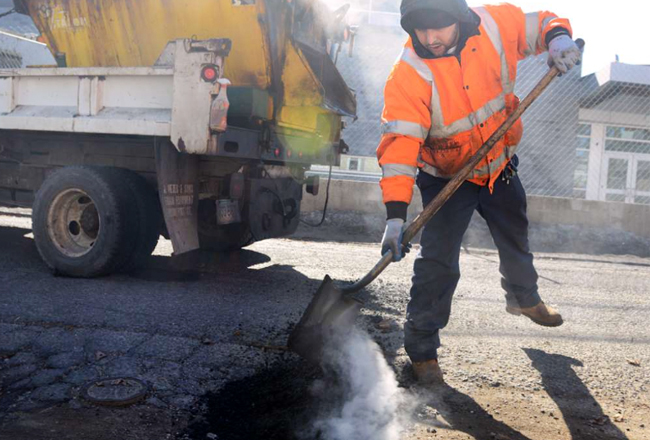The gap in Westchester County between what a typical renter can afford to pay for an apartment and what he or she typically will have to pay keeps growing, according to a Pattern for Progress report.
That was among the findings of an analysis by the Newburgh-based organization. The nonprofit policy group analyzed a national study on housing affordability called “Out of Reach,” released earlier in June by the National Low Income Housing Coalition.
The coalition report found that renters in Westchester County would need to earn $32.81 an hour in 2017 to afford a basic two-bedroom apartment at the monthly fair market rent of $1,706 in the county, as calculated by the federal Department of Housing and Urban Development. The typical renter in Westchester actually makes $18.25 an hour, according to the report.
Pattern for Progress tracks annually a number it refers to as the monthly rent gap. It’s the gap between the fair-market rent for a two-bedroom apartment in Westchester and the level at which rent would be affordable at average renter wage in the county, which is no more than 30 percent of income.
In Westchester, the monthly rent gap increased by $173 between 2016 and 2017, an approximately 30 percent rise, according to Pattern for Progress.
An affordable rent for a two-bedroom apartment at a typical Westchester renter”™s salary would be $949 per month – $757 below the county”™s HUD-calculated fair market rent.
The gap between affordable and fair-market rents in the county is up from $584 last year. The nearly 30 percent increase was the largest among the nine counties in the mid-Hudson Valley region.
“In Westchester, the gap is going up drastically,” said Joseph Czajka, senior vice president at Pattern for Progress and executive director of its Center for Housing Solutions and Urban Initiatives.
The U.S. is becoming a “renter nation,” Czajka said. That’s especially true in metropolitan regions, where land is scarce and expensive for single-family home construction.
“So in constructing multifamily right now, while financing is good, developers can construct luxury homes and the demand for those homes is very, very high,” he said.
More than 2,200 market rate units are expected to be built in Westchester between 2016 and 2018, according to an Admiral Real Estate Services report.
While a tight market may drive rents up, wages haven’t followed. The average renter’s hourly wage rate has increased 3.2 percent since 2012, according to Pattern for Progress. In the same period, the county’s fair market monthly rent for a two- bedroom unit has increased about 8 percent.
“Wages are not going up at the same rates, so those forces are kind of pulling these numbers apart,” Czajka said.
The annual income required to afford a two-bedroom apartment at fair market rate in Westchester is $68,240, about $9,800 higher than the statewide number, according to the National Low Income Housing Coalition study. The study found that about 39 percent of the county’s households are renters.
Nationally, the gap between fair market rent for a two-bedroom apartment, $1,103, and the monthly rent affordable at the mean renter wage is $251. In New York, the statewide fair market rent for a two-bedroom apartment is $1,460 while the rent affordable at the mean renter wage is $1,247.
New York had the fifth-highest wage rate needed to afford a two-bedroom fair market apartment, behind Hawaii, the District of Columbia, California and Maryland.
“We have the resources to solve the affordable housing crisis in America by rebalancing federal housing expenditures to serve our country”™s most vulnerable households,” said National Low Income Housing Coalition president and CEO Diane Yentel. “We lack only the political will to do so.”
Pattern for Progress in its report, it cautioned against proposed cuts to HUD programs, including community development block grants and the HOME investment program that helps fund affordable housing.
Czajka cited the role community development block grants play in maintaining infrastructure in low-income neighborhoods, providing small-business loans and funding programs such as Meals on Wheels.
“It’s a huge impact,” he said. “Every dollar that comes in under a federal program, either a community development block grant or a low-income housing tax credit, the leverage is 1.8. So if you have a $20 million housing project in a community, the multiplier will bring the local investment up to $36 million.”
The National Low Income Housing Coalition study is available at http://nlihc.org/oor. The Pattern for Progress analysis is available at http://www.pattern-for-progress.org/wp-content/uploads/2015/04/Further-Out-of-Reach-2017.pdf






















